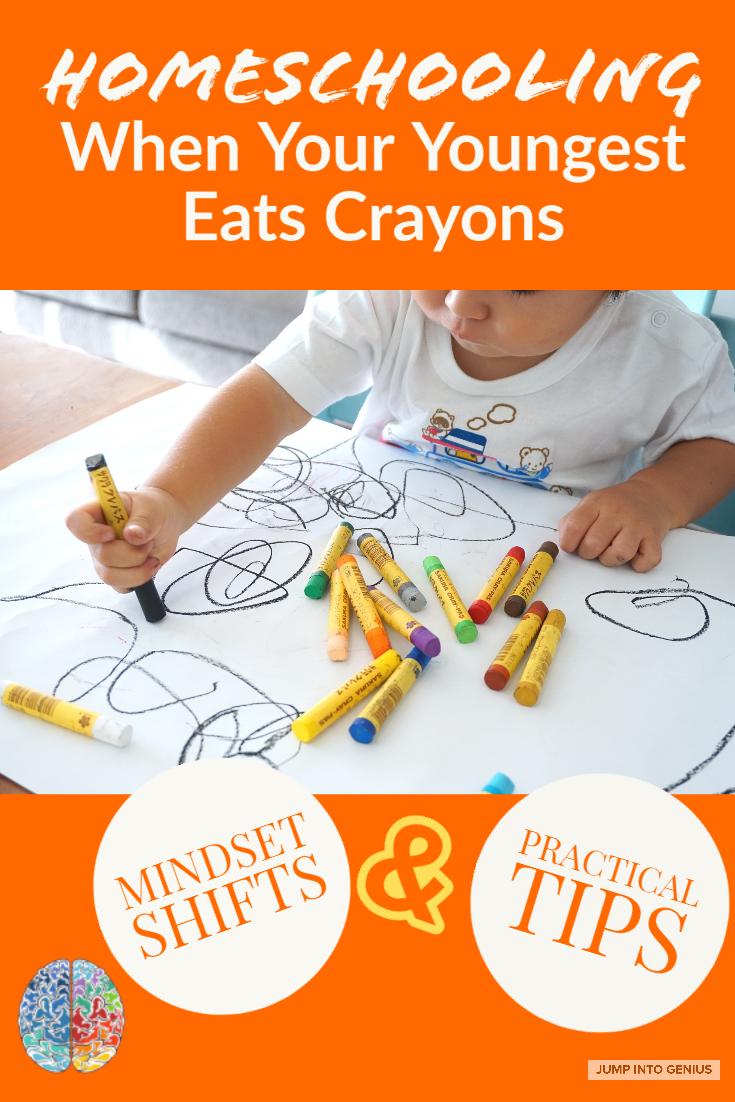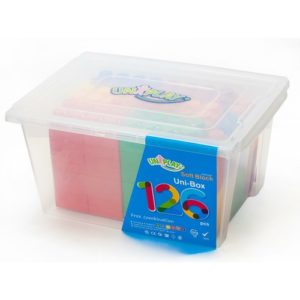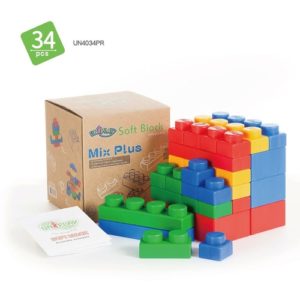
A guide to finding peace in the midst of the chaos.
Do you dream of the day when your youngest will behave like the child in the picture above? Enjoying this part of your life requires a combination of mindset shifts and practical help to get through your days without feeling like you are being torn apart at the seams from being pulled in three different directions all day.
If you have a toddler: Look at the big picture, create realistic routines, and make peace with chaos.
Marla Szwast
The Big Picture Can Calm You Down
Write down your life/homeschooling priorities. Don’t forget to include all the things that may be even more important than academics. It helped me to use the following categories: Necessary, essential and desirable. (I think I got these categories from a book…Charlotte Mason, or Ruth Beechick?) This list should be unchanging. It is grabbing the core of what you believe are the most important things to teach your children.
I’ll share an example of one thing we put down for each category to give you some ideas to jump off from. Under necessary we have character training, under essential we have reading, and under desirable we have spelling. Don’t let the list take up more than a page, the point here is to focus on the most important things, not list every detail of life.
Replacing the toilet paper roll does not belong on this list, but learning how to do chores well or keep a clean house may show up on here somewhere. Don’t be generous with the number of items you put under necessary & essential, so much of what we strive for does not belong in these categories and it helps to put desirable things in the place where they belong.
When you are struggling in any area, look at your list. Is the issue even on here? If so what category is it in? If it is under desirable, that is your cue to calm down and be patient. If it is under necessary that is your cue to focus in on the problem and pull out all the stops to correct it.
You may have to drop some desirable things while focusing on something in the necessary or essential categories, which is okay. There is plenty of time in life to pursue desirable knowledge and skills. We do not want our desire for these things to crowd out who we want our children to become, (like trustworthy, hardworking, and polite people.) You made the list, look at it often and trust it as a kind of signpost to help you keep your own priorities straight.
Keep in mind the three R’s which used to be the foundation of learning. Reading, writing, and arithmetic are all skills that your child will learn better if they work on them each day. The rest of learning is content. There are two things to keep in mind about content. One, you can never teach your child all the information content that is available to us in the modern world. Two, your child will never stop learning content, so there is no rush.
Realistic Routines are Sanity Savers
Your toddler needs the most attention. Your toddler needs constant supervision. Your toddler’s needs have to be met quickly. This has to be okay. It does not mean the other children will not get their turn. But it certainly does mean that if you try to sit down for several straight hours of uninterrupted schooling, you will be disappointed. If your goals for every day cannot be realistically met, you will feel like a failure at the end of every day. Don’t do that to yourself. Scrutinize your goals and conform them to reality. Do not dream of doing what you know you could do without this toddler. After all, it is your grand calling to love this little person who needs so much, and you do. So do not get caught in the false ideal of what you “should” be able to do in a day.
Live in the day of the toddler. Do not try to cram the toddler into the day of you.
Maybe while your toddler is eating breakfast, you can help one older child with math for 10 or 15 minutes.
Not enough? How old is the child, and how much of the math can be done without you? Let’s say you have a 5 or 6-year-old, who needs you to walk him through every problem. If you do math 10 minutes a day for 5 days a week, that is 50 minutes a week of math. If you do school for 36 weeks, that is 1,800 minutes of math. There is not so much a child this age needs to know about numbers that it cannot be learned in 1,800 minutes. Sure, they may be able to learn more if you spend more time, but do you, in reality, have more time right now? Can more be learned just as easily when the child is able to work independently?
An older child can get a 10 minute lesson on the concept from you, and then finish on their own. Maybe they spend 30 or even 60 minutes on math a day, depending on their age. They still can make do with 10 minutes of mom on most days. If they need extra time or instruction, this may have to happen while the toddler is napping, or even after dinner when dad is home to lend a hand either with the toddler or the math instruction.
After breakfast your toddler will probably want to run around the house full speed looking for tasty morsels of paper, crayons, and glue that your older children have inadvertently dropped all over the house, even though all the floors were clean when you went to bed last night. Anyhow, after directing the older ones to once again pick up the floor, you can possibly capture and share this energy of your toddler.
Have a song time with motions attached. Big motions like Hokey Pokey, and little motions like Itsy Bitsy Spider. If you have any children under the age of 9 or 10 in your house, these songs will be fun and beneficial to them as well. Motor skills are under nourished in our modern world.
I often used we sing and move, in the mornings, and we also had a small trampoline for jumping, and lots of contests of who can jump the longest or do the most push-ups. Also lots of acting out different animals. It is healthy and fun, and the toddler will be delighted to be able to join in on your activities. If the weather is nice and you have a park nearby, you can skip all that and take the kids to the park for half an hour.
Movement is one of the greatest ways to start a homeschooling day, especially if you have little ones. Many children crave the gross-motor, sensory input so much that they cannot even sit still until after they have gotten their daily dose of movement vitamins. This is also extremely beneficial for your toddler because gross motor movement is one of the subjects they are so busy learning at this stage.
Now that you have fed your toddler’s stomach and nervous system, you might get a little break. It is possible your toddler will be content to have an older sibling play with them while you have time with a different one, or that they will be content in a playpen or other safe area for a little while.
-
 Uniplay Soft Building Blocks - UNiBOX$55.00 – $70.00
Uniplay Soft Building Blocks - UNiBOX$55.00 – $70.00 -
 UNiPLAY Soft Building Blocks - Mix Plus Series$25.00
UNiPLAY Soft Building Blocks - Mix Plus Series$25.00
This is a good time to pull out a favorite toy or activity which the toddler only gets during this time each day. Depending on the toddler, you may have 10 min, 20 min, or even 30 minutes. You may be able to get in a reading lesson. If you are not teaching reading, you can correct work, read aloud, or do another activity that requires mom’s attention.
Pay attention to your toddler’s cues. If they are getting restless or fussy after 10 minutes, don’t plan to have a 30 minute lesson in this part of the day. Keep it short and stop when planned, going back and giving a few minutes of attention to your toddler. If your toddler knows you will be coming to check in after a predictable and short amount of time, once they are used to the routine, they will be less likely to fuss for you during their independent play time.
Keep yourself out of boxes like “I should be done with school by noon.” That is not going to happen with a toddler in the house. You are going to rely on the toddlers nap time for getting a good chunk of school done. When I was teaching my oldest first and second grade I had two toddlers, plus a younger baby to juggle. We did school after dinner. This was the perfect fit for us during that phase of life. My oldest had gotten his energy out for the day and was ready to sit and concentrate, I had napped with the toddlers and baby (so I was not exhausted at this point in the day), and dad was home to play with little ones.
If your older children are still young, early elementary, I encourage you to focus on just a little of the basics each day, and perhaps on good days throw in some extra. For example, use your toddler’s naptime to teach reading, math, and handwriting (if you cannot get them into the morning.) When your toddler is having a patient easy day, have some history or science that is open and go which you can pull out to take advantage of these rare opportunities of extra hours for learning. This can be as simple as a shelf full of read-alouds covering the topics you would like to get to at some point this year.
If you have older children than you need curriculum that is open and go for a lot of their subjects. This doesn’t mean you need to change your educational philosophy or your child’s style of learning, you just need to be picky that whatever curriculum tools you use are not too complicated for the child to follow on their own. Sometimes this just means creating an easy to follow organizational system for your child.
There are many ways to organize your child’s schoolwork, and there is no one “best system”. Every mom has their own preferences and ways of thinking, and our children also have their own preferences and ways of thinking. For every situation, you just have to figure out what is going to work for you right now. I have organized school work many ways, and don’t ever regret changing my system.
Some things only work for a while. Some systems themselves are more work, yet also perhaps more needed for certain ages or personalities, and you can move to a different system that is easier on mom as they get older. The point is to create a flow to your day. The older children need to be able to “flow” with their day, without you needing to constantly remind them what their next step should be.
When creating routines for your day keep in mind the other things that need to happen in life. Such as washing the dishes and making dinner. If something does not have a specified place in your day, it will probably not get done. Having a specified time for everything that needs to happen means you do not have to worry about that thing during any other part of your day, because you know that it will be taken care of during the planned time.
Don’t forget to put “mommy recharge time” into your routine as well. A happy mommy can run with the day of the toddler much more effectively than an exhausted, frustrated mommy. This means, get your sleep, eat your food, and do your fun thing. Your fun thing is the thing that gives you energy instead of taking it away. You need to feed your body, mind, and spirit.
I found it easier with toddlers to follow a routine versus a schedule. We did every day in a certain order, but I did not attempt to predict at what time each thing would happen or how long it would take. I kept lots of empty spaces. So there was an after breakfast routine, an after lunch routine and an after dinner routine.
The list was short enough it would never be unaccomplished by the next mealtime, or bedtime. Of course, to ALWAYS be done, with time to spare, while chasing a toddler, your list has to be minimalist. But knowing you have the essentials covered and you can use empty spaces of time as you like is a gift. On a hard day, in an empty space, you can let all the kids play together while you drink a cup of tea.
This cannot happen if you don’t leave space in your life for it. When you have a toddler, it is much more likely that mom NEEDS this cup of tea to happen. If you do want to schedule out your time, take how long you think something should take and multiply by 3… that is how much time you need to dedicate to the item on your schedule.
Make Peace with Chaos
No matter how well you plan your day, if you have a toddler, there will be chaotic moments.
Moments like I had when I finished helping my oldest with a math problem one day to realize that my two littlest boys, ages 2 and 3, were being quiet… not a good sign. A bit a searching revealed they had found a great place to play… in an outdoor fire pit… ashes, ashes, everywhere!
Chaos does create a certain amount of stress and mess, but that is okay.
Take a deep breath.
Acknowledge the craziness that is your life right now. Then smile, because really, what is cuter than two little boys painting themselves with ashes?
Take pictures before you yell.
Listen to your instincts, they often warn you when your little one is into something.
Do not be afraid to stop helping your big kids, while you go check on a little one. You may be surprised at what your older child has accomplished by the time you get back. (Then again, they may have just sat there daydreaming, but daydreaming is important too.)
Remember that this is just one season in your life, and if you want to look back on it fondly, you have to live in it fondly.
Take a toddler break. One of the best ways to recharge yourself is to get out of the house and away from the kids once in a while. You need a break. The break is a gift not only to yourself but also to your family, because you will come back recharged and able to give them more.
Play with your toddler.
Take a deep breath.
Enjoy the good moments.
Move.
Eat.
Sleep.
These are not secrets, but they are the things that have the power to keep you sane in the middle of your lovely chaos.


